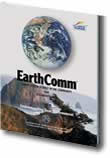Below are storylines that were designed by Cheryl Mosier, an Earth Science Teacher at Columbine High School in Littleton, Colorado.
Big Idea:
- In order to sustain the presence and quality of human life, humans and communities must understand their dependency on Earth resources and environments, realize how they influence Earth systems, appreciate Earth’s carrying capacity, manage and conserve nonrenewable resources and environments, develop alternate sources of energy and materials needed for human sustenance, and invent new technologies.
- Change through time produced Earth, the net result of constancy, gradual changes, and episodic changes over human, geological, and astronomical scales of times and space.
- Dynamic environments and ecosystems are produced by the interaction of all the geospheres at the Earth’s surface, and include many different environments, ecosystems, and communities that affect one another and change through time.
|
|
Activity 1 – Sedimentary Rocks |
Activity 2 – Igneous Rocks |
Activity 3 – Metamorphic Rocks |
Activity 4 – Rock Units |
Activity 5 – Structural Geology |
Activity 6 – Reading the Geologic History |
Activity 7 – Geology of the United States |
|
Key Evidence Learned |
- identify and classify sedimentary rocks - describe three main types of sedimentary rocks - classification systems - determine environment a rock was deposited in |
- identify igneous rocks using a chart - how do two main types form - understand classification system
|
- identify metamorphic rocks using a chart - agents of metamorphism - materials can change over time |
- rocks are arranged as units - general shapes of rock units based on rock type - read and interpret geologic maps |
- faults and folds - models help us understand the Earth - types of faults and how they form |
- basic principles used to determine relative ages - unconformities and their role in geologic history - interpret geologic history of an area using the basic principles of superposition, original horizontality, lateral continuity and crosscutting relationships |
- ages of rocks in the US - general geology of the US
|
|
Connection to: |
|||||||
|
Big Idea |
- uses for different sedimentary rocks - how sedimentary rocks are formed |
- uses for different igneous rocks - how igneous rocks are formed |
- uses for different metamorphic rocks - how metamorphic rocks are formed |
- how our community has changed through time |
- how our community has changed through time |
- how the Earth has changed through time - how to interpret changes in the Earth |
- where specific rock units are in the US - why certain environments exist in certain locations |
|
Real Life and Chapter Challenge |
- sedimentary rocks in our area - how those rocks formed |
- igneous rocks in our area - how those rocks formed |
- metamorphic rocks in our area - how those rocks formed |
- geology of the Front Range |
- where faults and folds are in the Front Range |
- how to interpret the layers of the Front Range |
- where our community fits in relation to others in the US |
|
Geosphere |
- how sedimentary rocks form |
- how igneous rocks form |
- how metamorphic rocks form |
- how layers are formed and change over time |
- how faults form - how folds form |
- how Earth’s layers have changed over time |
- rock units in the US |
|
Hydrosphere |
- how sedimentary rocks form |
- how igneous rocks form under water |
|
- how weathering and erosion changes layers |
|
- how water has changed the layers we see |
- where water has been in the past |
|
Atmosphere |
- how air changes sedimentary rocks |
- how air changes igneous rocks |
- how air changes metamorphic rocks |
- how wind has changed layers through weather and erosion |
|
- how wind has changed the layers we see |
|
|
Cryosphere |
|
|
|
|
|
|
|
|
Biosphere |
- types of life that can exist on different rocks |
- types of life that can exist on different rocks |
- types of life that can exist on different rocks |
- how different layers at the surface determine the type of ecosystem |
|
- how life has changed over time as the surface has changed |
- why different ecosystems are in different |

